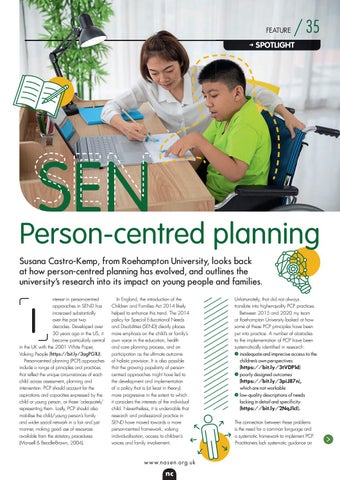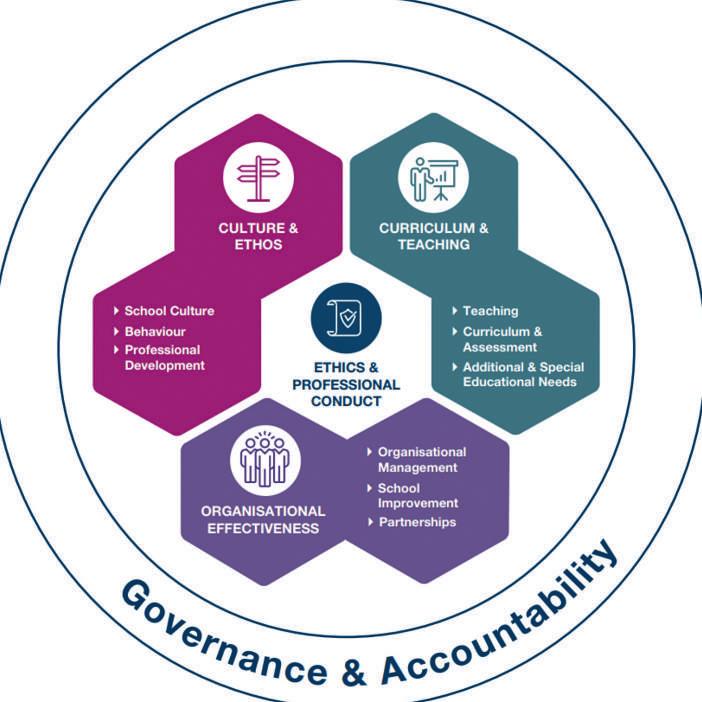FEATURE ➜
/ 35
SPOTLIGHT
SEN Person-centred planning Susana Castro-Kemp, from Roehampton University, looks back at how person-centred planning has evolved, and outlines the university’s research into its impact on young people and families. nterest in person-centred approaches in SEND has increased substantially over the past two decades. Developed over 30 years ago in the US, it became particularly central in the UK with the 2001 White Paper, Valuing People (https://bit.ly/3agPG1U). Person-centred planning (PCP) approaches include a range of principles and practices that reflect the unique circumstances of each child across assessment, planning and intervention. PCP should account for the aspirations and capacities expressed by the child or young person, or those ‘adequately’ representing them. Lastly, PCP should also mobilise the child/young person’s family and wider social network in a fair and just manner, making good use of resources available from the statutory procedures (Mansell & Beadle-Brown, 2004).
I
In England, the introduction of the Children and Families Act 2014 likely helped to enhance this trend. The 2014 policy for Special Educational Needs and Disabilities (SEND) clearly places more emphasis on the child’s or family’s own voice in the education, health and care planning process, and on participation as the ultimate outcome of holistic provision. It is also possible that the growing popularity of personcentred approaches might have led to the development and implementation of a policy that is (at least in theory) more progressive in the extent to which it considers the interests of the individual child. Nevertheless, it is undeniable that research and professional practice in SEND have moved towards a more person-centred framework, valuing individualisation, access to children’s voices and family involvement.
www.nasen.org.uk
nc
Unfortunately, that did not always translate into higher-quality PCP practices. Between 2015 and 2020 my team at Roehampton University looked at how some of these PCP principles have been put into practice. A number of obstacles to the implementation of PCP have been systematically identified in research: inadequate and imprecise access to the children’s own perspectives (https://bit.ly/3tVDP1d) poorly designed outcomes (https://bit.ly/3piJ87n), which are not workable low-quality descriptions of needs lacking in detail and specificity (https://bit.ly/2NqJ1cI). The connection between these problems is the need for a common language and a systematic framework to implement PCP. Practitioners lack systematic guidance on




